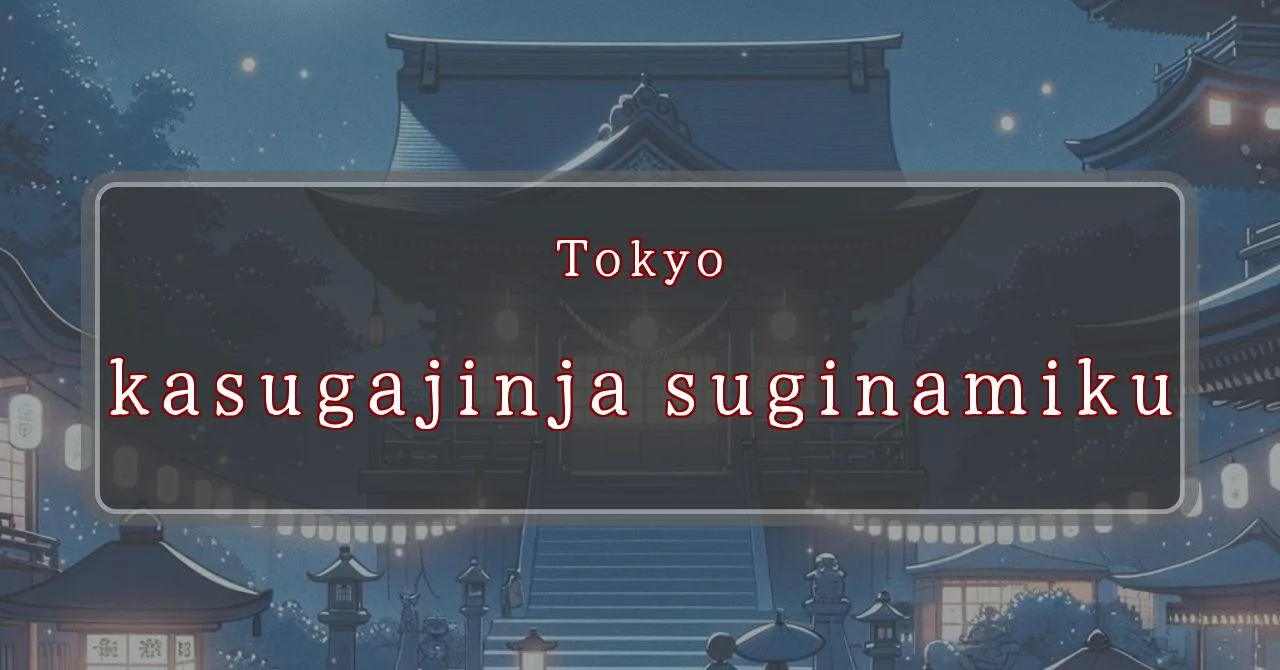春日 Shrine: A Divine Gathering Under the Cherry Blossoms
Basic Information
Kasuga Shrine is a Shinto shrine located in Miyamoto 3-1-2, Suginami-ku, Tokyo, Japan. It is a village shrine in the modern Shinto shrine ranking system.
- Address: 3-1-2 Miyamoto, Suginami-ku, Tokyo
- Phone Number: 03-3329-0837
- Access: 10-minute walk from Fujimigaoka Station on the Keio Inokashira Line
- Festival Days: September 15th, 2024
Main Events and Attractions of the Festival
The Kasuga Shrine Festival is an annual event that takes place on September 15th. The festival features a variety of events and attractions, including:
Mikoshi Procession
A mikoshi is a portable Shinto shrine that is carried through the streets during festivals. The Kasuga Shrine mikoshi is a large and ornate structure that is carried by a team of people. The procession is a lively and colorful event that draws many spectators.
Kagura Performance
Kagura is a traditional Japanese dance and music performance that is often performed at Shinto shrines. The Kasuga Shrine kagura performance is a beautiful and graceful dance that tells the story of the shrine’s founding.
Bon Odori Dance
Bon Odori is a traditional Japanese folk dance that is performed during the Obon festival, which is a time to honor the spirits of the dead. The Kasuga Shrine Bon Odori dance is a lively and energetic dance that is enjoyed by people of all ages.
Food Stalls
A variety of food stalls are set up at the Kasuga Shrine Festival, selling a variety of Japanese dishes, such as yakitori, takoyaki, and okonomiyaki. There are also stalls selling souvenirs and crafts.
Fireworks Display
The Kasuga Shrine Festival concludes with a spectacular fireworks display. The fireworks are launched from a nearby park and can be seen from all over the area. The fireworks display is a beautiful and fitting end to the festival.
Blessings and Deities
Kasuga Shrine is dedicated to four deities: Takemikazuchi-no-Mikoto, Futsunushi-no-Mikoto, Amenokoyane-no-Mikoto, and Himegami-no-Mikoto. These deities are said to bring blessings of good fortune, prosperity, and protection.
- Takemikazuchi-no-Mikoto: God of thunder and lightning, and a fierce warrior deity.
- Futsunushi-no-Mikoto: God of swords and martial arts, and a protector of the nation.
- Amenokoyane-no-Mikoto: God of wisdom and knowledge, and a guide for the gods.
- Himegami-no-Mikoto: Goddess of beauty, fertility, and good fortune.
Origin and History
Kasuga Shrine was founded in the year 1658 by a farmer named Iguchi Hachiroemon. Iguchi Hachiroemon was a devout follower of the Kasuga Shrine in Nara, and he wanted to establish a branch shrine in his own village. He received permission from the head priest of the Kasuga Shrine in Nara, and he built the Kasuga Shrine in Miyamoto, Suginami-ku.
The Kasuga Shrine has been a popular place of worship for the people of Suginami-ku for over 350 years. It is a place where people can come to pray for good fortune, prosperity, and protection.
Tips and Notes for Visitors
If you are planning to visit the Kasuga Shrine Festival, here are a few tips and notes:
- The festival is held on September 15th every year.
- The festival starts at 10:00 AM and ends at 4:00 PM.
- There is a mikoshi procession at 1:00 PM.
- There is a kagura performance at 2:00 PM.
- There is a Bon Odori dance at 3:00 PM.
- There are food stalls and souvenir stalls at the festival.
- The festival is free to attend.
Parking Information
There is no parking lot at the Kasuga Shrine. However, there are several coin-operated parking lots in the area.
- Miyamoto Parking Lot: 5-minute walk from the Kasuga Shrine
- Suginami Public Parking Lot: 10-minute walk from the Kasuga Shrine
- Fujimigaoka Station Parking Lot: 15-minute walk from the Kasuga Shrine
Popular Stalls and Food Carts in Recent Years
| Type of Stall | Description |
|---|---|
| Takoyaki | A staple at Japanese festivals. Characterized by a crispy outside and a creamy inside. |
| Jaga Butter | A simple yet popular snack of hot potatoes lavishly topped with melted butter. |
| Baby Castella | Small castella cakes, sweet and fluffy treats enjoyed by children and adults alike. |
| Grilled Ayu with Salt | Fresh ayu fish grilled whole with salt, a savory taste of Japanese summer. |
| Shaapin | A unique gourmet item influenced by foreign cuisine, with a chewy skin wrapping the filling. |
| Okonomiyaki | A Japanese grilled dish where you often choose your own ingredients for a personalized flavor. |
| Cotton Candy | A fluffy, sweet snack that’s extremely popular with children. |
| Chocolate Banana | A banana coated in chocolate, a fun and visually appealing dessert. |
| Kushiyaki | Various types of ingredients skewered and grilled, an easy-to-enjoy snack. |
| Yakisoba | Fried noodles mixed with a special sauce, a fast food favorite in Japan. |



